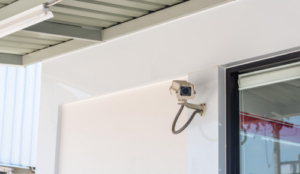A property is probably the largest asset you will ever own. Therefore without proper care and attention it can degrade and end up costing you a lot of money in repairs and fixes.
Regularly checking your property will save you time and money in the long run. Which is why creating an effective property prevention plan is key.
What is preventive maintenance?
A planned maintenance schedule involves setting up an inventory of all the property’s assets, including:
– A specification of the capabilities of the equipment
– Where it is located
– The department responsible for the item
– Other relevant information
Actioning a system of inspections and repairs ensures the long-term preservation and optimal performance of these assets. The purpose of this process is to predict and prevent defects before they occur, which in turn reduces the risk of unscheduled downtime and costly repairs.
A strong maintenance program strategy also allows property managers to focus on more time-sensitive company projects instead of surprise emergencies.
The 4 steps to a maintenance program
There are four steps to a solid preventive maintenance plan: inspection, detection, correction and prevention.
Inspections assess the current efficiency of equipment to ensure it is operating at optimal performance. During the inspection phase of the maintenance program, necessary upgrades or repairs are noted and a schedule for regular inspections is formulated.
Creating a customised preventive maintenance plan that is organized in categories specific to a particular property enables property managers to detect issues when they are still relatively simple to fix. They are then able to correct problems before they manifest by promptly addressing the obstacle before it intensifies or halts operations.
With regular inspections and previous reports to refer back to, prevention of asset failure will become part of the organisational protocol, empowering staff to be proactive rather than reactive.
Why you should invest in a property maintenance plan
All facilities will encounter risks that have the potential to put the business, employees or tenants in jeopardy if left unattended. Essentially, all it takes is one severe incident or a significant period of company downtime for the advantages of a maintenance program to be clear.
The main objectives of implementing a maintenance plan are to increase the longevity of assets by restoring them to operational condition. This eliminates the unnecessary bulk spending of repairing faulty equipment, resulting in better margins due to less downtime and ultimately, preventing future malfunctions.
Taking the first step for preventive maintenance
Working a streamlined preventive maintenance plan into a property management schedule doesn’t need to be challenging.
A property maintenance can include:
- Controlling the condition of floors, ceilings and walls
- Landscaping & pest control
- Ensuring stairs and railings are not loose
- Safety checking electrical systems
- Inspecting for leaks and signs of water damage
If having a dedicated maintenance budget seems too expensive, consider what abrupt crisis repairs would cost? Not to mention the loss of profit during a business standstill.
The more data collected from inspections and repairs, the easier it will become for a facility to predict contingencies and minimise future uncertainties.
If you need help with creating a plan or completing any of the work, then call us on 01249 443 278 or email us at hello@dependablelimited.com and we can help.




